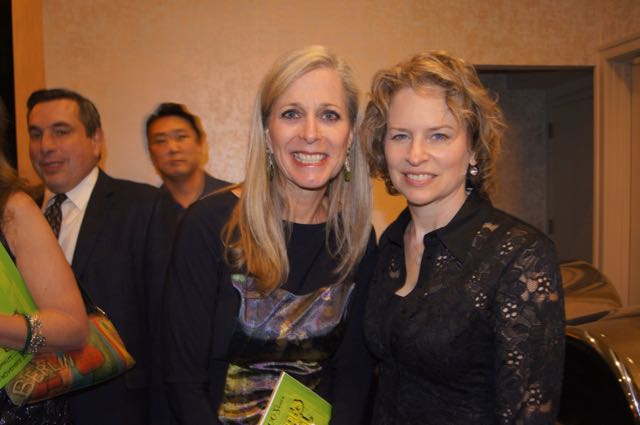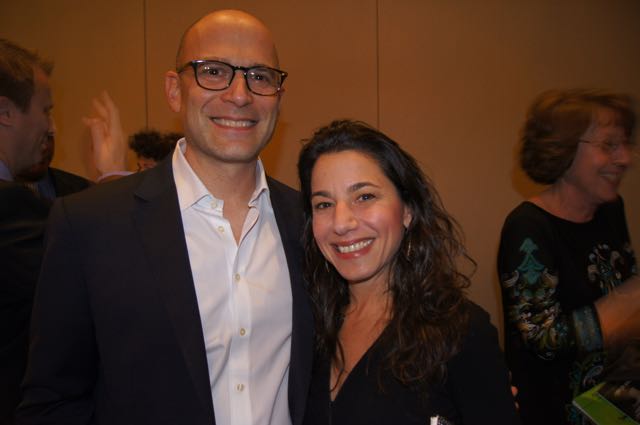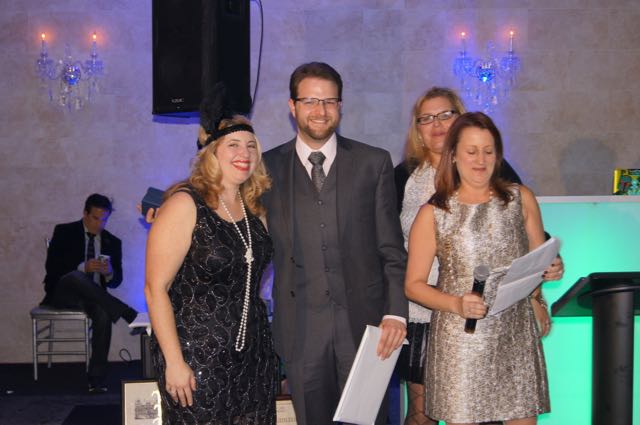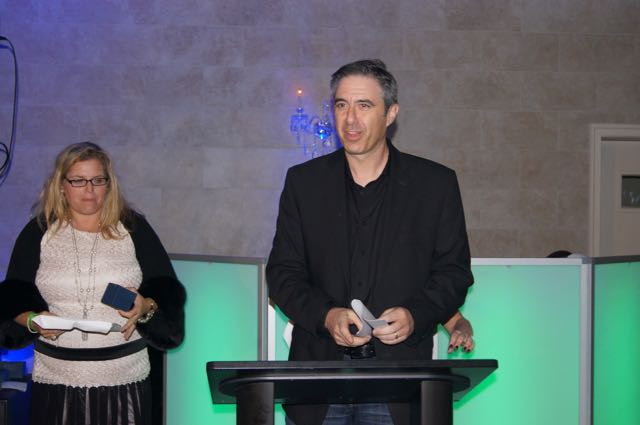Current Home to Move to the Golden Horseshoe and Expand
- Details
- Written by: Joanne Wallenstein
- Hits: 6554
 Current Home, the modern accessories and gift shop, will relocate to a larger space at the site of the former Chef's Table in the Golden Horseshoe in the spring of 2016. They will double in size and offer a more extensive selection of merchandise.
Current Home, the modern accessories and gift shop, will relocate to a larger space at the site of the former Chef's Table in the Golden Horseshoe in the spring of 2016. They will double in size and offer a more extensive selection of merchandise.
The store opened in 2013 and has grown in the past two years under the management of owners Alyson Lane and Karen Tolchin. The two have recently travelled far and wide to seek out unique and hard to find merchandise.
Commenting on the news Lane said, "We are thrilled about the move and our newly renovated space. We will be carrying a wider selection of accent furniture, lighting, mirrors and artwork in the new store as well as a more robust selection of dinnerware and flatware. We are also focused on creating a bridal registry to service the next generation of Current Home customers.
Current Home will also launch Complete by Current Home, an in-home accessories design service. "Many of our customers have asked for our help to accessorize their home. Complete allow our stylist to bring an expertly edited assortment of décor to the clients home to give them the finished look they always dreamed of."
Local Author Publishes "The Last Dreamer"
- Details
- Written by: Joanne Wallenstein
- Hits: 6635
 Scarsdale's Barbara Solomon Josselsohn recently published her first novel, The Last Dreamer, about the hopes, ambitions and frustrations of a suburban housewife who has put aside her own professional goals to raise her children and support her husband's career. Those of us who live in the 'dale will recognize the setting and identify with many characters in the story. It's fun to see the place we know and love chronicled in a novel and to get into the head of a stay-at-home mom who doesn't feel very lucky to be there.
Scarsdale's Barbara Solomon Josselsohn recently published her first novel, The Last Dreamer, about the hopes, ambitions and frustrations of a suburban housewife who has put aside her own professional goals to raise her children and support her husband's career. Those of us who live in the 'dale will recognize the setting and identify with many characters in the story. It's fun to see the place we know and love chronicled in a novel and to get into the head of a stay-at-home mom who doesn't feel very lucky to be there.
The quick read follows Iliana Passing, a former business writer, as she attempts to resurrect her name in journalism. Looking for a compelling story, she happens upon a former teen idol (Jeff Downs), who now runs a business in northern Westchester and manages to get an appointment to interview him. When he assumes she is a writer for the New York Times, she doesn't correct him, and through a series of misrepresentations and misunderstandings she convinces him that he'll be featured in the paper – while at the same time, convincing herself that the story will launch her back onto the career path she lost years ago.
Her white lies take her further than she intended, ultimately landing her far from home on a business trip to California. When the teen idol and a former band member reunite, Passing quickly realizes that the sorry duo will never draw an audience again. Worse, when Downs realizes he has been deceived, and Passing's husband finds out what she's up to, she risks the loss of far more than her faltering writing career.
I can't share more without ruining the book for you, but I will say that it's engaging and often hilarious. Check it out on Amazon here.
We asked Josselsohn to answer a few questions about herself and her new book and here is what she shared:
How long did it take you to write the book?
It took a long time — about 18 years all told! It took so long for a few reasons — I was new to fiction writing, so I had a lot to learn, and I was raising my kids and working at home as a freelance magazine writer, so my time was limited. I put it away for long periods of time, when I was struggling with the plot or feeling overwhelmed by how daunting the whole process of getting published seemed. But I always returned to it. I fell in love pretty early on with the characters and the story, so I never intended to put it away for good. I also had unbelievably wonderful teachers and friends who believed in the book and kept me motivated.
What are some of the differences between writing shorter fiction and developing a full-length novel?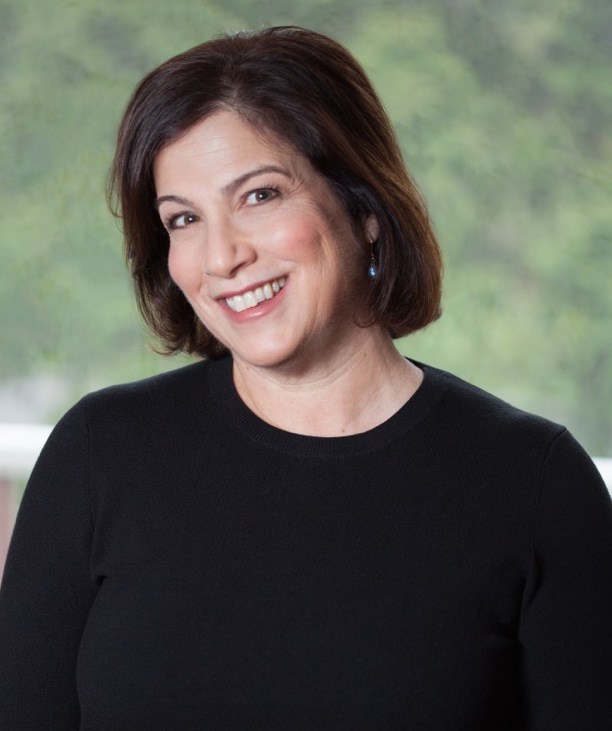
I'm actually not a short-fiction writer, but I can talk about the differences between writing a novel and writing the kinds of essays and business articles I've been writing for most of my professional life. Business writing is all about facts — getting the quotes, digging for details, and then assembling all the pieces into a compelling story. Novel writing is less about assembling and more about inventing. So there's a freedom to it that continues to feel new and invigorating to me. On the other hand, there's a lot more instant gratification to the kind of journalism I was practicing for many years. You research a story, you write it, your editor approves it, and within a few weeks or months, it's in print, and you're getting a paycheck. Novel writing — as least for me — is much s-l-o-w-e-r!
What was the process for finding an agent and a publisher?
Finding an agent is a tough process, and you definitely need a thick skin. You need to do everything — network, go to conferences, go to classes, join writers groups, send out cold queries — with the hope that something will stick. There's a lot of rejection involved, but then again, you only need one "yes"! I tried to get an agent for the first time many years ago and didn't get a nibble, which told me that the manuscript just wasn't ready. So I dove in for another revise. Then, when I was certain the book was finished, I tried again. This time - success! I had met my agent while I was still writing the book — I had enrolled in a class she taught at Sarah Lawrence College about the publishing business. I thought she was so smart and savvy, and I felt that her authors were very lucky to have her. When I finished the book, I followed up with her, and she asked to see my manuscript. Waiting to hear back from her took a few months, and it was torturous — but what at thrill when we spoke on the phone and she said she was interested in representing it! As I'd expected, once it was in her hands, things sped up considerably. She sold it to my publisher within a few short months.
There's an old adage that says "Write What You Know." Can you comment on this in light of your new book?
Well, the book takes place in Scarsdale and the protagonist is a former journalist who took a break from her career to have a family — so I guess I adhere pretty strongly to that adage! But actually, I think there's a balance in the book between what I came to the writing process knowing, and what I wanted to research and explore. As you may know, one of the main characters in the book is Jeff Downs, an ex-TV star who achieved fame very early in life. I've always been fascinated by celebrity — celebrity gained and celebrity lost — and I was excited to do the research that could help me render this character successfully. I set out to read as many celebrity biographies and autobiographies as I could, and I found many common threads in their stories. I also read a ton of books and articles about Hollywood, the movies, and stardom. And I dragged my poor husband to a bunch of "oldies" concerts so I could see former teen idols decades after they were stars. By the time I was writing about Jeff Downs, he was entirely real to me.
Your main character, Ilana, goes way out on a limb to pursue her dream. What were the challenges of writing an engaging story that doesn't strain credulity?
I think the important thing is never to lose touch with the emotional truth in the story. Anger, regret, frustration, disappointment, hope, love — these emotions are what novels are really about, and the plot helps a writer explore them. Think about the Harry Potter books — talk about plots that strain credulity! And yet many people love these books because what they're really about is a young man's personal — and often internal — struggle to face his fears and prevail. Some of my favorite movies from the past — Big with Tom Hanks, Peggy Sue Got Married with Kathleen Turner — had outlandish plots, but it didn't matter; viewers were invested in the main character's personal odyssey. Look at the Toy Story movies. Nearly everyone I know saw Toy Story 3, and nearly all of them fell to pieces at the end. It didn't matter that the plot was unrealistic; it was a heartfelt story about family, and love, and growing up, saying goodbye — all the things that matter in life.
We live in a relatively small community – was it difficult to write a book that hits so close to home?
I actually think that's what kept me motivated. I would mention to people what the book was about, and they'd immediately tell me about their own (or their wife's) struggle to get back into the workforce, or they'd talk about their own teenage celebrity crush. When people related and responded to my idea, it made me feel that I was on the right track.
As you note in the book, the market for journalists and writers has changed. What are your thoughts about the future of creative writing and journalism, and what advice would you give students who wish to pursue this field?
I think the market for magazine writers — like the kind I was — has gotten tougher. The Internet put many excellent magazines out of business. Of course, there are many online outlets today for writers, but many of these don't pay writers for their work. New writers who want to freelance, I think, will search harder for paying markets than I did when I was just starting out. On the other hand, the Internet has opened up a ton of new markets for writers in any genre who want to get their work read. It's really a wonderful feeling, when readers respond to your work. As for fiction writing, I actually think that market has opened up a bit in the last few years. It was pretty tough several years ago, when the big publishers were consolidating and people were predicting the demise of the print book. But that hasn't happened. In fact, new, innovative publishers who know how to best connect readers and writers have come on the scene. I have several writer friends who struggled in the past, as I did, and are now having more success in getting published. I think it's a pretty exciting time to be a novelist, actually.
What are your plans for the future?
I am currently working on my second novel, which I think it will be a little darker than the first one. I have no other details to share right now — but I hope you'll stay tuned!
Josselsohn will read from the book at the Scarsdale Library on Friday night January 8 at 7:30. Stop by to meet her, pick up a copy of the book and also meet local author Liane Carter, who will discuss her book, "Ketchup is My Favorite Vegetable: a Family Grows Up With Autism."
ALL They Want For Christmas is A Hoverboard. But...
- Details
- Written by: Stacie M. Waldman
- Hits: 11714
 Hoverboards. If you've watched or read the news in the past couple of months or if you have a tween or teen in your life, you've undoubtedly heard the term "hoverboard," and likely it's been along with the phrase "...but all my friends are getting one," or "I've never wanted anything so badly in my life."
Hoverboards. If you've watched or read the news in the past couple of months or if you have a tween or teen in your life, you've undoubtedly heard the term "hoverboard," and likely it's been along with the phrase "...but all my friends are getting one," or "I've never wanted anything so badly in my life."
"Hoverboard" is actually a misnomer. The board doesn't actually hover; it runs on two wheels. It's more of a "personal transportation device (PTD)." What's been coined a hoverboard is actually a self-balancing, electric board of sorts. Your feet stand parallel on a wheeled board rather than one behind another like on a skateboard. They move at various speeds depending on the model and are the hottest item on kids' wish lists this year for the holidays. Priced from $200-$2,000, a hoverboard is a big ticket item. Most of the better quality ones cost between $400-$600 depending on their bells and whistles, such as speakers.
I had the chance to try out a hoverboard with  my husband late one night in Times Square at a pop-up store. Two models from Samsung were on sale; one for $399 and one for $599. The (sketchy) sales guy told us he charges $10 per person to try it out but the look on my face must have told him that there was no way were doing that, so he caved and let us try it out for free. Wow. I kicked off my heels and listened to the basic instructions then went for a pretty thrilling ride around the store. Seriously, it's cool. It's odd that they are being sold right in Times Square as it's already illegal to ride a hoverboard on the streets and sidewalks in Manhattan. (They're illegal to ride in public in Great Britain so don't expect to see the Queen on one either.)
my husband late one night in Times Square at a pop-up store. Two models from Samsung were on sale; one for $399 and one for $599. The (sketchy) sales guy told us he charges $10 per person to try it out but the look on my face must have told him that there was no way were doing that, so he caved and let us try it out for free. Wow. I kicked off my heels and listened to the basic instructions then went for a pretty thrilling ride around the store. Seriously, it's cool. It's odd that they are being sold right in Times Square as it's already illegal to ride a hoverboard on the streets and sidewalks in Manhattan. (They're illegal to ride in public in Great Britain so don't expect to see the Queen on one either.)
So, are you the best parents in the world for getting your kid a hoverboard? Or should you think twice?
In the last year, there were at least 11 reports of fires and explosions related to hoverboards in 10 states, but those were thought to be due to cheaper lithium-ion batteries used in knock-off versions of the more legitimate (and expensive) brands like Samsung, Swagway, and LG.
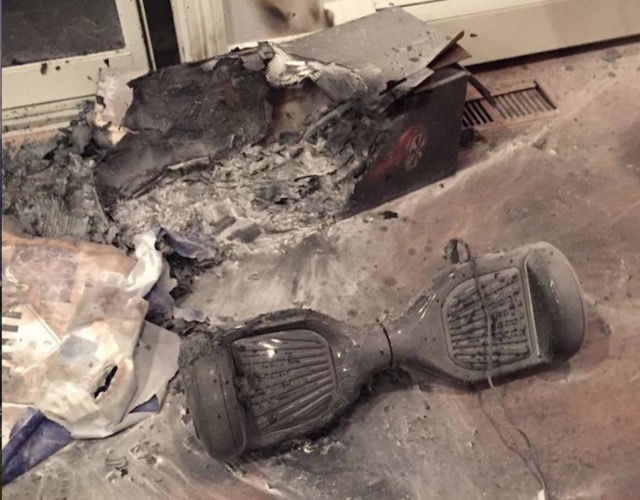 However, last week was a game changer for hoverboards and it hit close to home for Scarsdale. A Swagway brand hoverboard (generally considered one of the most trusted brands) purchased from Modell's Sporting Goods (with a Samsung battery) caught fire while charging in Chappaqua and caused significant damage to the homeowner's house. Thankfully, the residents were home and they were able to put out the fire before the entire house lit up in flames. Since this incident with the higher-end hoverboard in Chappaqua, Amazon.com removed most brands of boards from its inventory and Overstock.com removed all boards from its shelves. The U.S. Consumer Product Safety Commission is investigating this incident and others. A lawsuit has been filed against Swagway and Modell's by the Chappaqua homeowner and Swagway is currently denying that any fires have been associated with their boards. http://fortune.com/2015/12/16/hoverboard-swagway-lawsuit/
However, last week was a game changer for hoverboards and it hit close to home for Scarsdale. A Swagway brand hoverboard (generally considered one of the most trusted brands) purchased from Modell's Sporting Goods (with a Samsung battery) caught fire while charging in Chappaqua and caused significant damage to the homeowner's house. Thankfully, the residents were home and they were able to put out the fire before the entire house lit up in flames. Since this incident with the higher-end hoverboard in Chappaqua, Amazon.com removed most brands of boards from its inventory and Overstock.com removed all boards from its shelves. The U.S. Consumer Product Safety Commission is investigating this incident and others. A lawsuit has been filed against Swagway and Modell's by the Chappaqua homeowner and Swagway is currently denying that any fires have been associated with their boards. http://fortune.com/2015/12/16/hoverboard-swagway-lawsuit/
Preeti Singh bought a board for her 16-year-old. She is aware of the safety concerns. "I make sure that the charging happens when we are around so if it blows up the mishap can be contained ASAP," she said. Ms. Singh is referring to reports that hoverboards are catching fire while charging. However, when I dug deeper, half of all fire and explosion reports related to these devices occur while the board is in use or at rest. (The board in Chappaqua was charging for a mere 45-minutes when it exploded!)
I had a chance to speak with the Village of Scarsdale Fire Inspector, Al Mignone. He reiterated the fact that not all boards are exploding while charging. He's quite familiar with lithium-ion batteries and the fire risk they pose if not properly secured or used. "I'm worried about transporting these things," he said. "If it explodes while transporting it in your trunk, your car will catch fire." He reminded me of the cell phone fires caused by lithium-ion batteries bending in the flip phones. "If this type of battery bends or crimps or shorts out, you're in trouble." He continued by saying that these have come on the market so quickly that there's been no time to regulate the safety of these devices but what is definite at this point is that the hoverboards pose a fire hazard and no one knows why. Several airlines have banned them from flight until the reasons for the explosions and fires can be determined.
Some people are buying knee pads and elbow pads to use while riding, but this seems almost silly in light of the potential risk of an explosion. Also keep in mind that given the ongoing investigations, a recall of certain brands or models or even a full hoverboard recall is possible. There is no data about the safety of these boards, they are unregulated, there have been no tried and true fixes to the fire hazard, and there is no definitive answer for why some have caught fire.
Do your research, and please let us know in the comments if you're in the "hoverboard" market or not and why!
Local Entrepreneur Responds to Demand for Quick and Easy Tech Repair
- Details
- Written by: Stacie M. Waldman
- Hits: 9190
 Do you have an unruly device? Has your phone ever launched itself across the room? Has your iPad ever jumped out of your toddler's hands head-first onto the concrete? Or plunged into the pool for a quick swim? There's no need to dread having to get a broken screen fixed now that uBreakiFix, a local technology repair company, is essentially in our back yard.
Do you have an unruly device? Has your phone ever launched itself across the room? Has your iPad ever jumped out of your toddler's hands head-first onto the concrete? Or plunged into the pool for a quick swim? There's no need to dread having to get a broken screen fixed now that uBreakiFix, a local technology repair company, is essentially in our back yard.
uBreakiFix specializes in the repair of small electronics, ranging from iPhones, smartphones, tablets, computers (Mac's & PC's), game consoles and other devices. It offers while-you-wait repair services, a price match guarantee, free diagnostics and a 90-day nationwide warranty.
Seth Berkman, owner of BerkmanTech, an IT support company serving businesses in Westchester, is now the owner of three local uBreakiFix repair shops: Scarsdale, Mamaroneck, and Mt. Kisco. He grew up in Scarsdale in-tune with local tech needs, became aware of the growing demand for a place one could go to get technology fixed without breaking the bank or waiting for ages for service. He knows, for example, that Scarsdale is a community with many families that have small children and considered that when opening his uBreakiFix locations. "We have great waiting areas that are kid-friendly," Berkman said. "We've got magazines that kids love as well as kid-appropriate television shows in our waiting area. But don't get too comfortable...we do our absolute best to fix your device within an hour." There is ample, free parking at the Scarsdale location.
"We have an opportunity every single day to be a hero in a small way," Berkman said. "Our phones hold more than data—they contain our plans, our stories, our networks and our memories. When disaster strikes and all of that very personal data is put at risk, we get to be the ones that 'save the day'. That's how our customers put it. It's really rewarding work."
The Scarsdale team has seen its fair share  of excitement since it opened in September of 2014. Every repair has a story behind it—though some are crazier than others. In June, uBreakiFix District Manager Jesse Glassberg salvaged a phone that fell from a customer's pocket while on a roller coaster. The phone was smashed and the customer believed it to be completely destroyed; however, in less than 30 minutes, Jesse emerged with a good-as-new phone. The best part? This miraculous repair was all done while the customer waited.
of excitement since it opened in September of 2014. Every repair has a story behind it—though some are crazier than others. In June, uBreakiFix District Manager Jesse Glassberg salvaged a phone that fell from a customer's pocket while on a roller coaster. The phone was smashed and the customer believed it to be completely destroyed; however, in less than 30 minutes, Jesse emerged with a good-as-new phone. The best part? This miraculous repair was all done while the customer waited.
uBreakiFix has saved Americans an estimated $500 million in replacement costs since its inception in 2009 and to date has repaired over one million devices and the brand is only growing. "You'll be impressed with our customer-centric approach and our professional handling of your technology repair," Berkman said. "I'm really proud that I can provide a service like this to people in Scarsdale and beyond. We make it easy and affordable to get your device fixed."
"Our service is backed by a national company, but we are versatile enough to adapt to the needs of local markets where our customers are. We don't operate with a one-size fits all mentality," said David Reiff, Co-Founder and Vice President of uBreakiFix.
This article is sponsored content from uBreakiFix Scarsdale, located at 745 Central Park Ave. Hours are 10 AM-7 PM Monday through Saturday and noon-5 PM on Sundays. You can make an appointment or walk in at any time. Click here for the Scarsdale location.
Greenacres School Turns 100 in Style
- Details
- Written by: Toni DiMartino and Midori Im
- Hits: 7097
 Greenacres Elementary, Scarsdale's oldest school, celebrated its Diamond Jubilee Gala on Friday, November 20 with a flapper-fabulous themed affair at Mulino's at Lake Isle. The more than 350 guests, which included alumni, principals (past and present), staff, board of education members, PTA presidents (past and present), parents (past and present) and community members, enjoyed a fun-filled evening featuring dinner, dancing and live and silent auctions.
Greenacres Elementary, Scarsdale's oldest school, celebrated its Diamond Jubilee Gala on Friday, November 20 with a flapper-fabulous themed affair at Mulino's at Lake Isle. The more than 350 guests, which included alumni, principals (past and present), staff, board of education members, PTA presidents (past and present), parents (past and present) and community members, enjoyed a fun-filled evening featuring dinner, dancing and live and silent auctions.
The Jubilee Gala was a culmination of many months of preparation led by two Greenacres mothers (and SHS buddies) Sharon Kass Higgins and Isabel Uchitelle Finegold. They, and their 100th Anniversary Committee, reached out to past parents, students and faculty, not so easy since there was no Facebook or even worldwide web for much of the school's history. Ms. Finegold, who also was a member of the class of '80 at Greenacres, noted that one of the alumni honored was located because he played chess with a former teacher's husband. Commenting on the night, Finegold said, "It was a great evening to celebrate our beloved school turning 100. The community, our alumni and Greenacres staff, past and present, came out in full force to celebrate. The roaring 20's were evident with boas, pearls and fringe".
New York State Senator Andrea Stewart-Cousins, U.S. Representative Eliot L. Engel and Assemblywoman Amy Paulin were on hand to present congratulatory proclamations.
Among the speakers were Greenacres PTA President Lynn Marvin, Greenacres Principal Sharon Hill, Scarsdale Superintendent of Schools Dr. Thomas Hagerman, Scarsdale Board of Education President Leila Shames Maude and alumni honoree Journalist Alan Schwarz (SHS '86).
The evening's honorees included Greenacres alumni: Broadway music director, Charlie Alterman, SHS '93; Statesman, Woody Bliss, SHS '54; painter/sculptor Nicole Eisenman, SHS '83; lawyer and diplomat, Kenneth I. Juster, SHS '72; founder & CEO, Rob Kissner, SHS '04; editor emerita, Linda Carpenter Leavitt, SHS '64; journalist, Alan Schwarz, SHS '86 and artist, Saya Woolfalk, SHS '97; as well as Greenacres Principals and Greenacres PTA Presidents.
The annual fundraiser enables the PTA to enrich the educational experiences of all Greenacres children by funding programs such as assemblies, technology and STEAM, arts programming, classroom and library enrichment materials, author visits, environmental awareness and much more.











